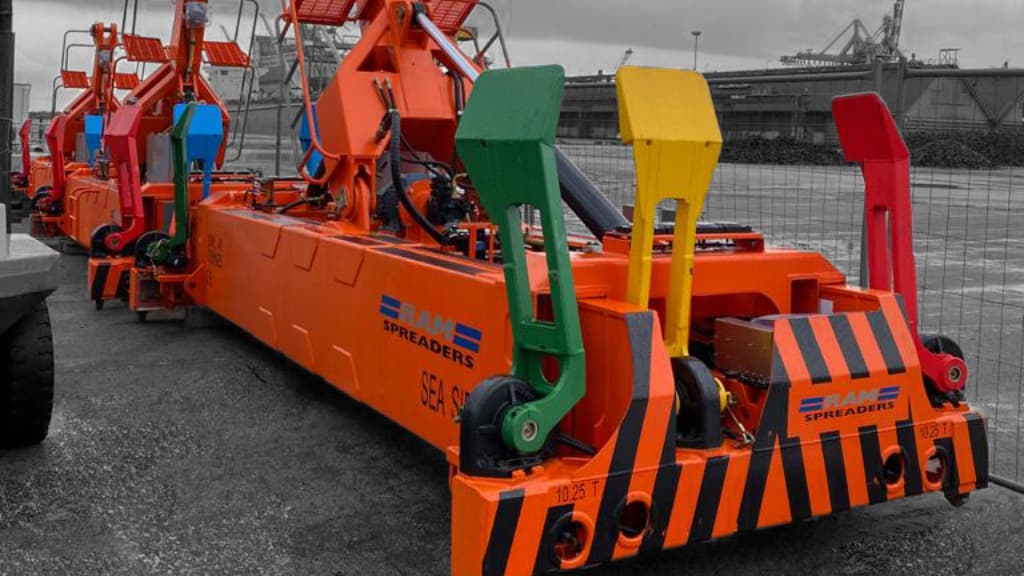Mobile harbour crane (MHC) spreaders make up over a third of cranes being used at ports and terminal
Larger terminals use MHC cranes as a backup for ship-to-shore gantries or use giant MHC cranes such as the LHM 600, while smaller terminals prefer the higher flexibility of solely using MHC cranes to un/load cargo. They can manouver in any direction, and can be positioned along the port’s terminals, cargo storage areas, or rail yards.
As MHC equipment handles heavy loads, and operates in demanding environments, they must be maintained correctly and equipped with the correct safety features. In doing so, ports ensure the well-being of their operators, stevedores and others working nearby. Improving safety creates a ripple effect on employee confidence, leading to higher productivity.
In this article, we look at the safety features a spreader should have and what ports and terminals can do to improve the safety of mobile harbour crane container handling.
Standard safety features of a RAM MHC spreader
Mechanical blockading and interlocks
The physical, mechanical method ensures that all of the spreader’s twistlocks engage (lock into) all four container corner castings. Its primary purpose is to prevent the spreader from lifting a container when it is not fully engaged with a container, which can occur with damaged containers or when using an MHC. These mechanical interventions are located within the spreader twistlock assembly.
Tower Design
All our MHC container spreaders are fitted with a centre of gravity post tower system with an integrated hydraulic tank to enhance the spreader’s centre of gravity capabilities while handling eccentric container loads. Heavy-duty hydraulic cylinders connected to the mid-point of the tower and the spreader to allow the spreader to pivot along its longitudinal axis to level the container(s) safely.
Maintenance
Correct periodical maintenance of any spreader is crucial, with the MHC spreader being no exception. The length of downtime as a result of breakdowns due to inadequate maintenance far exceeds the limited amount of time and expense needed to periodically maintain your spreader.
We advise our customers to carry out regular inspections of their equipment and have a comprehensive maintenance plan in place to include regular lubrication and greasing of necessary components are shown in the operations and maintenance manual of the spreader. Inspections help to identify problems before they become serious, such as worn or damaged parts due to heavy usage or issues with the spreader’s control system. Identifying and addressing problems early can prevent unnecessary downtime and costly fixes.
Upgrades
To maximize the safety of MHC operations, we offer a range of optional upgrades to our customers, which can be added to existing spreaders or integrated into a new spreader during the manufacturing process. Some of the safety upgrades include twin-twenty detection system, virtual HMI diagnostic system, and a hand-pump for emergency twistlock operations.
Read our optional upgrades brochure for more information.
Training
Investing in practical and theory training allows key personnel and operators to have a greater understanding of the spreader’s functions and how best to ensure optimal container handling performance.
This can then make a significant difference to container handling operations and uptime of the equipment, in turn this will:
- reduce risk of accidents
- reduce risk of equipment damage
- reduce unnecessary downtime and costs
- increase efficiency
- increase productivity
Demand for MHC training sessions on the increase
We are conducting regular training sessions on our MHC spreaders, with successful practical and theory training sessions recently completed in Germany and the UAE. All training sessions are delivered by our expert after-sales management team who have amassed a wealth of experience in the industry and are happy to offer guidance and support throughout the lifetime of your RAM equipment.

